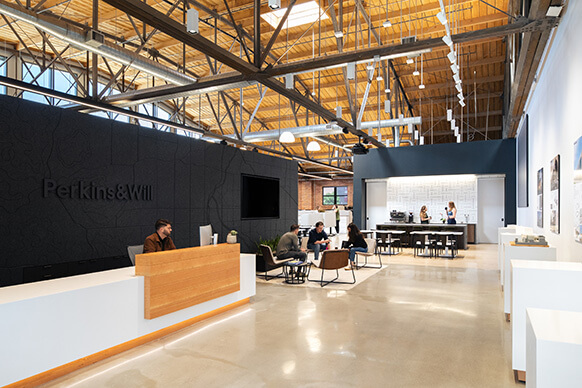创造和维护办公文化意味着什么? 就此而言,什么是办公室文化? 它的定义是否不同于工作场所? 代代相传呢?ERC将文化定义为”组织的性格和个性”。 我想进一步采用这一定义:办公室文化是您组织核心价值观的具体体现。 换句话说,你在那里生活,你说的话对你很重要。
在网站或社交媒体上放置某些内容,甚至将我们的客户推向某个方向是一件伟大的事情,但如果我们不是在现实生活中自己做这些事情,那么实际上这不是我们的办公室文化;这只是我们所说的一件事,因为我们认为人们想听它。 如果您的公司声称是一家推动绿色项目的可持续公司,那么您在办公室内正在做什么来创造一个更有利于碳的工作场所? 如果你把自己标榜为协作团队,你是否正在推动最年轻的员工在餐桌上占有一席之地并提出想法?
这一切听起来可能都是对抗性的,而且,任何认识我的人可以证明,我讨厌对抗,所以这不是意图。 作为几个不同规模的建筑公司的一员,我知道这种对话总是在不同点、不同尺度和所有人群中不断发生。 所以,对于它的价值,我将提供一些个人见解。
我完全属于千禧一代,皮尤研究中心将其定义为1981年至1996年间出生,他们的年龄在22至38岁之间。 虽然这听起来很宽,但它与所有其他代组(婴儿潮一代、X代等)大致相似。 然而,如果你本周去办公室看看,你很可能会注意到,很多,如果不是大多数,你的同事属于千禧一代类别。 事实上,根据皮尤调查,截至2016年,千禧一代已经成为劳动力中最大的群体。 所以,如果我能够如此大胆地为我的千禧一代同胞说话,那么自从我离开大学以来的七年里,有一件事对我来说已经变得非常清楚了:办公室文化很重要。
我们这一代人成长在一个信息无处不在的时代,每个工作场所和人都是快速搜索谷歌。 我们阅读了人们说的话,以及他们如何推销自己。 我们了解在线展示的价值。 我们也明白,在网上说点东西,然后过完全不同的现实生活是很容易的。 对于我这个年龄的人来说,这种事情尤其如此,而且,实际上,对于任何批判性地思考的人来说,都是如此。
我们还关心的不仅仅是早午餐、鳄梨吐司和模因。 我们成长于一个高度政治的时代,你几乎被要求对时事和全球问题发表意见。 在从气候危机到公平和公平薪酬,到多样性和包容性等问题上,我们的意见(并采取行动)比以往任何时候都多,这已经转化为我们在工作环境中寻求的。
这就是说,办公文化,无论它采取什么形式,都必须超越表面。 它必须超越口头上说或网站上引人注目的标签行。 员工必须每天都生活在我们的工作环境中,才能真正相信公司意味着他们所说的话。 劳动力中年轻员工的地盘正在改变价值观,迫使他们在办公室采取实际行动,他们每年要花上几百个小时。 通过拥有一种组织文化,这种文化被所有员工(从 CEO 到暑期实习生)完全接受和生活,我们可以帮助创建更全面、更周到的工作场所,进而更好的建筑和设计。
*我不会为喜欢早午餐而道歉。 它允许我吃早餐的食物,这是客观上最好的食物,睡觉,并消费酒精在社会可接受的环境。 这是理想的一餐。
德鲁·艾伦是爱雅科罗拉多州会员声音委员会主席。



